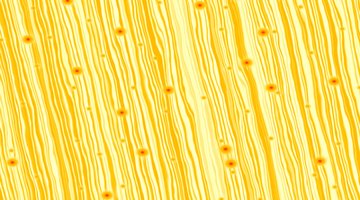What Is WBP Plywood?
In plywood, WBP stands for Weather and Boil Proof, the category of glue used to make the most durable plywood. WBP glues are made with melamine or phenolic resin. To be considered exterior grade or marine grade, plywood must be made with WBP glue.

Plywood Basics
Plywood is constructed of three or more thin sheets of wood (called veneers) glued together, with each layer laid with the grain running at right angles to the next layer. Each sheet of plywood consists of an odd number of veneer sheets. The cross-hatching of the wood grain makes plywood stronger than boards and less susceptible to warping.
WBP
Some North American sources refer to WBP as Water Boil Proof, but this is incorrect. WBP is a glue standard that was developed in Great Britain and is set down in British Standards Institution standard 1203:1963, “Specification for synthetic resin adhesives (phenolic and aminoplastic) for plywood.” This standard identifies four categories of plywood glue on the basis of durability. WBP is the most durable classification. In descending order of durability, the other glue classes are Boil-Resistant, or BR; moisture-resistant, or MR; and interior, or INT. According to the Food and Agricultural Organization of the United Nations, properly formulated WBP plywood is the only plywood recommended for exterior use without reservation.
Melamine vs Phenolic Resin
WBP plywood made with ordinary melamine rather than phenolic resin can maintain lamination in boiling water for between four and eight hours. High-grade melamine plywood can withstand boiling water for 10 to 20 hours. WBP plywood using ordinary phenolic resin glue can handle boiling water for one to three days. It should be noted that the length of time plywood can withstand boiling water without delaminating is not only dependent on the glue – it also depends on the grade of plywood used.
Plywood Grades
The use of one letter in a plywood grade indicates that the face and back of the sheet are of the same grade. Two letters divided by a slash indicates the face and back are of different grades. Plywood can be grade A, A/B, A/BB, B, B/BB, BB, WG or X. Grade A plywood has no jointed veneers and is free of major defects such as knots, knotholes, discoloration and cracks. Grade B plywood has minor defects such as discoloration or small knots. Grade BB plywood permits jointed veneers, large knots, plugged knotholes and minor cracks. WG plywood is guaranteed to be well glued with all knotholes plugged. X grade plywood may have knots, knotholes, cracks and other defects.
The Drip Cap
- In plywood, WBP stands for Weather and Boil Proof, the category of glue used to make the most durable plywood.
- Some North American sources refer to WBP as Water Boil Proof, but this is incorrect.
- WBP plywood made with ordinary melamine rather than phenolic resin can maintain lamination in boiling water for between four and eight hours.
- Grade BB plywood permits jointed veneers, large knots, plugged knotholes and minor cracks.
References
Resources
Writer Bio
Lyle Burwell has been writing professionally since 1978. His “Call Centers in the New Millennium” (ICM Global Intelligence (1999)) was the most checked out volume in the AT&T corporate library in 2000. His areas of expertise include business strategy and telecommunications. He has a diploma in broadcasting from Algonquin College.
Photo Credits
- plywood image by Paul Moore from Fotolia.com
- plywood image by Paul Moore from Fotolia.com
More Articles



